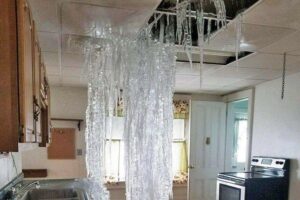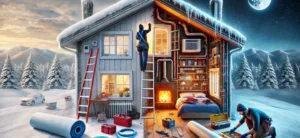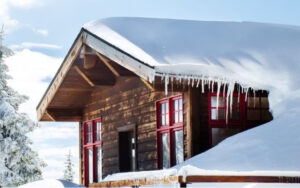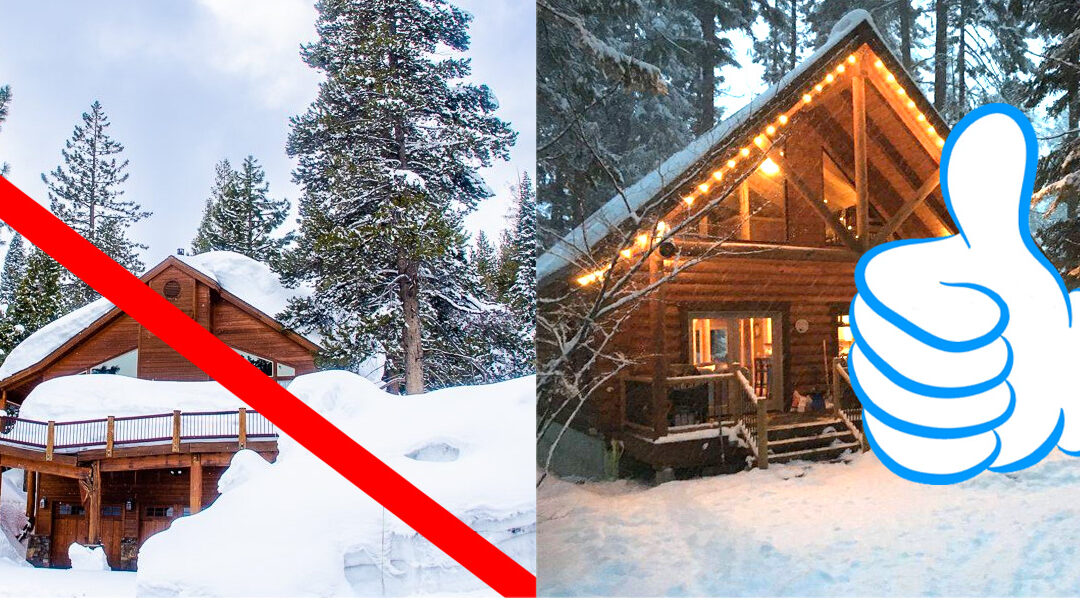Locals already know that failure to take action now will undoubtedly result in big and avoidable costs in the spring. Here is a comprehensive checklist for winterizing a home in Tahoe.
 Protect Your Pipes From Bursting
Protect Your Pipes From Bursting
• Turn off and drain outdoor water sources.
• Disconnect all garden hoses and shut off the water supply to outdoor faucets. If you have an irrigation system, make sure it is drained and winterized, as trapped water can freeze and burst the pipes.
• Insulate exposed pipes.
• Check for any exposed pipes
in unheated areas like your garage, crawl spaces, or outside walls and wrap them with insulation materials. Consider using heat tape for extra protection, especially on pipes that are particularly vulnerable to freezing.
• Know your shut-off valve.
Locate your main water shut-off valve. This might be in a hall or a shared utility area, and it’s essential that you know where it is and how to use it in case of an emergency. Everyone in your household should know this location.
• If you’re away, TURN OFF THE WATER with all faucets open. When they stop running, leave the water off and faucets open. Frozen water expands, and can bust pipes.
• Leave the heat on.
Do not turn your heat completely off. Set your thermostat to a minimum of 50-55°F to prevent interior pipes from freezing. Leaving cabinet doors open under sinks can also help warm air circulate to the pipes.
 Heating and Air
Heating and Air
• Service your heating system.
Before winter, have a professional inspect your furnace or heating system. This ensures it’s running efficiently and safely.
• Change air filters.
Replace air filters regularly throughout the winter to maintain good airflow and system efficiency.
• Check for drafts.
Inspect windows and doors for any cracks or gaps that could let cold air in. Seal them with weather stripping or caulk. This will help you save on heating costs.
• Close foundation vents.
If your home has foundation vents, close them for the winter to prevent cold air from entering the crawl space and freezing pipes.
 Exterior and Roof Maintenance
Exterior and Roof Maintenance
• Inspect your roof.
Look for damaged or missing shingles that could lead to leaks once the snow starts to pile up. A sturdy roof is essential to handle the weight of heavy snowfall.
• Clean gutters and downspouts.
Clear all leaves and debris from your gutters to ensure proper drainage. Clogged gutters can lead to the formation of ice dams, which can cause significant water damage to your roof and property.
• Install or check heat tape.
If your home is prone to ice dams, make sure your heat tape is working correctly. This is an electrical cord-like system that helps melt snow and ice at the roof’s edge, allowing water to drain properly.
• Prepare for snow removal.
Whether you plan to do it yourself or hire a service, have a plan for snow removal from your driveway, walkways, and stairs. Hiring a professional service is often the most reliable option for second homeowners, as they will ensure your property is accessible. A roof rake is also a good investment for safely removing snow buildup from your roof.
General Safety and Preparedness
• Test smoke and carbon monoxide detectors.
With windows and doors sealed for winter, there is an increased risk of carbon monoxide buildup from heating systems or fireplaces. Make sure your detectors are working properly and have fresh batteries.
• Inspect your fireplace and chimney.
If you have a fireplace, have it professionally inspected and cleaned to remove creosote buildup and prevent chimney fires.
• Prepare an emergency kit.
Lake Tahoe winters can bring power outages. Keep an emergency kit with flashlights, batteries, a first-aid kit, and non-perishable food and a few gallons of fresh water.
• Arrange for a local contact.
If you won’t be in Lake Tahoe full-time, consider having a trusted neighbor, friend, or property manager check on your condo periodically, especially after a major snowstorm.






